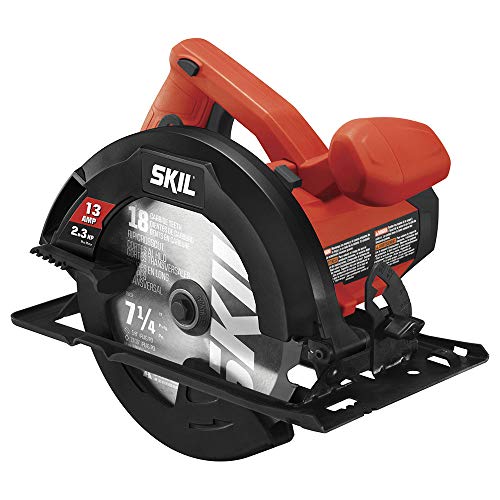When it comes to woodworking projects, having the right tools is essential. One of the most important tools for any woodworker is a circular saw. With so many options on the market, it can be overwhelming to choose the best one for your needs.
In this guide, we will discuss everything you need to know about choosing the best circular saw for your woodworking projects.
Types of Circular Saws
Before diving into specific features to look for in a circular saw, it’s important to understand the different types available. The two main types of circular saws are corded and cordless.
Corded circular saws are powered by electricity and are typically more powerful, making them ideal for heavy-duty tasks. On the other hand, cordless circular saws are powered by rechargeable batteries, providing more flexibility and portability.
Blade Size and Cutting Capacity
Blade size and cutting capacity are important factors to consider when choosing a circular saw. The most common blade sizes for circular saws are 7-1/4 inches and 6-1/2 inches. The larger the blade size, the deeper the cut it can make.
Additionally, consider the cutting capacity of the saw, which refers to the maximum thickness of material it can cut. Make sure to choose a saw with a cutting capacity that meets your project needs.
Power and Speed
When it comes to power, the motor is a crucial aspect of a circular saw. Look for a saw with a high-amperage motor that can deliver enough power to tackle tough woodworking tasks. Additionally, consider the speed of the saw, which is measured in revolutions per minute (RPM).
A higher RPM typically means faster cutting, making it easier to work through materials efficiently.
Bevel Capacity and Adjustability
Bevel capacity refers to the maximum angle at which the saw blade can be tilted for bevel cuts. Look for a circular saw with adjustable bevel settings, allowing you to make precise bevel cuts at various angles.
This feature is especially important for woodworking projects that require angled cuts, such as crown molding or furniture making.
Ergonomics and Safety Features
Comfort and safety should always be a priority when choosing a circular saw. Look for a saw with ergonomic handles that provide a comfortable grip and reduce fatigue during extended use.
Additionally, consider safety features such as blade guards and blade brakes, which can help prevent accidents and injuries while operating the saw.
Additional Features
Consider additional features that can enhance the functionality and convenience of a circular saw. Some saws come with built-in laser guides for improved accuracy, dust collection systems to keep your work area clean, and LED lights for better visibility in dimly lit spaces.
These extra features can make a significant difference in the overall performance of the saw.
Conclusion
Choosing the best circular saw for woodworking projects requires careful consideration of various factors such as blade size, power, bevel capacity, and safety features. By understanding the different types of circular saws and their key features, you can make an informed decision and select a saw that meets your specific needs.
With the right circular saw in hand, you can take your woodworking projects to the next level with precision and efficiency.
FAQs
Q: What is the difference between a corded and cordless circular saw?
A: Corded circular saws are powered by electricity and are generally more powerful, while cordless circular saws are powered by rechargeable batteries, offering more portability and flexibility.
Q: How do I choose the right blade size for my circular saw?
A: The blade size you choose depends on the depth of cut you require for your woodworking projects. Larger blade sizes can make deeper cuts, while smaller blade sizes are more suitable for lighter tasks.
Q: Are safety features important when choosing a circular saw?
A: Yes, safety features such as blade guards and blade brakes are crucial for preventing accidents and injuries while operating a circular saw.
Q: What additional features should I look for in a circular saw?
A: Consider features such as laser guides, dust collection systems, and LED lights, which can enhance the functionality and convenience of a circular saw.







